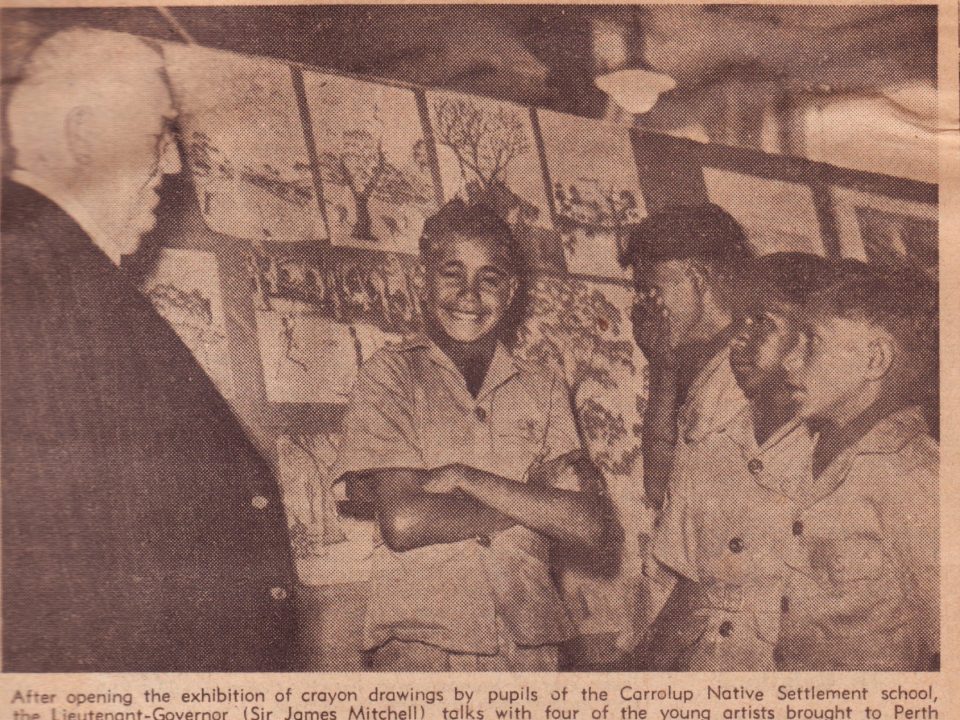How did the drawings of the Aboriginal children of Carrolup first become known to the general public? Here is a summary of some of the initial ‘successes’ of the children, which you can follow in more detail by reading the newspaper article to which we have linked. You can also hear some reflections of Noelene White, daughter of Carrolup teacher Noel White, about the public’s reaction to the children and their artworks. Noelene was filmed by my colleague John Stanton in 2006.
The children’s drawings first attracted attention at the Katanning Show in November 1946, as indicated in my last blog.
Three children (Reynold Hart, Dulcie Penny and Vera Wallam) had their articles accepted in the Lord Forrest Centenary Booklet – in competition with other children from all over the state – whilst Parnell Dempster had a drawing accepted. Only one other school in Western Australia had more submissions accepted than Carrolup Native Settlement School. Vera and Parnell won two of the ten one guinea prizes that were offered.
The children’s drawings shown in the Lord Forrest Centennial Exhibition were seen by thousands, and attracted the attention of the press. Max Praed acclaimed the art and the Whites’ education programme in a Sunday Times newspaper article. Thomas Sten, Principal of the Teachers’ College at Claremont, asked if he could display some of the children’s art on the walls of his college.
In an exhibition of 450 Carrolup drawings at a major department store in Perth, four of the boys (Left to Right: Claude Kelly, Barry Loo, Reynold Hart and Parnell Dempster), aged between ten and twelve years old, showed their skills and over £120 ($8,000 in today’s terms) was raised from sales of their art and donations. The state’s Lieutenant-Governor, Sir James Mitchell, who opened the exhibition, said:
If what they had seen was a specimen of the progress of these native children, who had been at school only two years, he predicted exceptional results in the future.’ Sir James Mitchell, 1947
More attention was focused on the children’s drawings in the 1947 Katanning Show.
Visitors to the exhibition hall displayed great interest in the collection of work by native children of the Carrolup Settlement. Featuring principally a series of crayon drawings by children between the ages of ten and thirteen, the work created not a little surprise and admiration.’ Great Southern Herald, 7th November 1947
In 1948, doubters at a teachers’ conference held in Albany were silenced by a stunning display of drawing given by three of the boys, Parnell Dempster, Reynold Hart and Barry Loo. All 96 artworks exhibited soon sold, raising £24 (worth $1,450 today) for the school.


